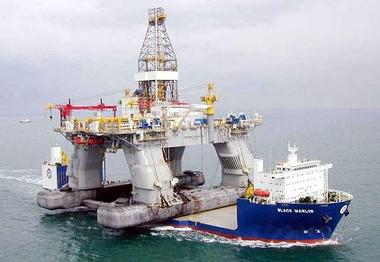Deepwater Horizon (Drilling rig)
Enlarge text Shrink text- Work cat.: Deepwater Horizon oil spill, 2010.
- Wikipedia, viewed on July 19, 2011(Deepwater Horizon was an ultra-deepwater, dynamically positioned, semi-submersible offshore oil drilling rig owned by Transocean; built in 2001; sank in the Gulf of Mexico on Apr. 22, 2010)
Deepwater Horizon was an ultra-deepwater, dynamically positioned, semi-submersible offshore drilling rig owned by Transocean and operated by the BP company. On 20 April 2010, while drilling in the Gulf of Mexico at the Macondo Prospect, a blowout caused an explosion on the rig that killed 11 crewmen and ignited a fireball visible from 40 miles (64 km) away. The fire was inextinguishable and, two days later, on April 22, the Horizon collapsed, leaving the well gushing at the seabed and becoming the largest marine oil spill in history. Built in 2001 in South Korea by Hyundai Heavy Industries, the rig was commissioned by R&B Falcon (a later asset of Transocean), registered in Majuro, and leased to BP from 2001 until September 2013. In September 2009, the rig drilled the deepest oil well in history at a vertical depth of 35,050 ft (10,683 m) and measured depth of 35,055 ft (10,685 m) in the Tiber Oil Field at Keathley Canyon block 102, approximately 250 miles (400 km) southeast of Houston, in 4,132 feet (1,259 m) of water.
Read more on Wikipedia >
 Topic
Topic






